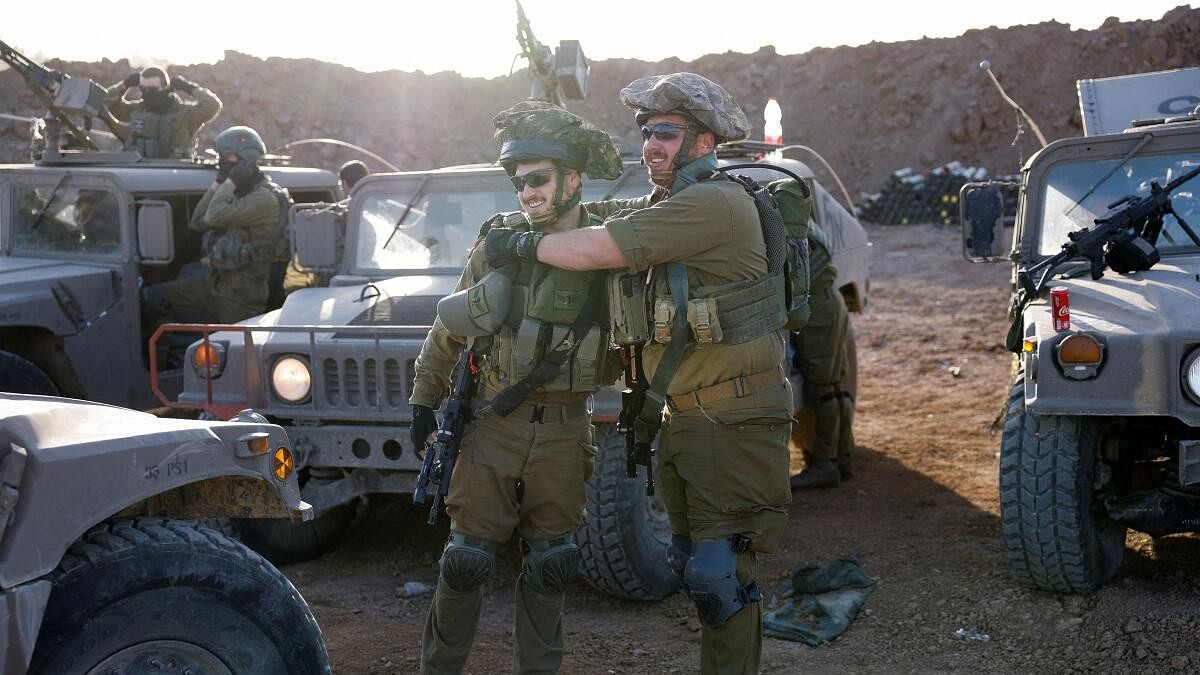
Israeli soldiers prepare to enter Gaza, amid the ongoing conflict between Israel and the Palestinian Islamist group Hamas, on the Israeli side of the Israel-Gaza border, December 11, 2023.
Credit: Reuters Photo
The Israeli military said it had taken control of the area surrounding the former headquarters of Hamas in Gaza City, and that its forces were engaged in intense battles in three areas of the Gaza Strip where it said the group still had "strongholds," including in the south, where the United Nations has warned of an increasingly perilous humanitarian situation.
The Israeli military now controls the area in Gaza City surrounding Palestine Square, home to municipal offices and the headquarters for Yahya Sinwar, Hamas' leader in the enclave, Rear Adm. Daniel Hagari said at a news conference late Sunday.
Israeli forces are now focused, he said, on fighting in three areas: Jabaliya and Shajaiye, two neighborhoods in northern Gaza, and in Khan Younis, the largest city in southern Gaza.
Jabaliya, a densely populated area just north of Gaza City, has been struck relentlessly by Israeli forces since the first weeks of the war, including with at least two 2,000-pound bombs during one airstrike last month, according to a New York Times analysis. Israeli troops have also targeted Shajaiye, a residential area, since the start of their ground invasion in late October.
Israeli forces have yet to find Sinwar, whom they believe is hiding in southern Gaza, and officials said last week that Israeli forces had surrounded his house in the Khan Younis region, although his location was unknown. Hagari said that capturing or killing him is still a goal of the war, which has entered its third month.
The director of Israel's national security council, Tzahi Hanegbi, has rejected the idea that the lives of Sinwar and other top Hamas leaders could be spared if they went into exile outside Gaza -- as Yasser Arafat, the leader of the Palestine Liberation Organization, did in 1982 during a war between Israel and Lebanon.
"I believe that Sinwar isn't a partner for a model of that kind," Hanegbi told Israel's Channel 12 in an interview that aired this weekend. "But if we kill him, which is the intention, the leadership that succeeds him might understand that in order to be spared his fate it needs to leave the Gaza Strip humiliated, but at least to save its life."
Israel has been conducting aerial and ground attacks on Gaza since Oct. 7, the day that Hamas-led attacks killed 1,200 people in Israel, according to Israeli officials. Hundreds of thousands of people have fled to the southern part of the Gaza Strip, to zones that the Israeli military said would be safe.
Instead, Palestinians in Gaza have struggled to find cover and security as Israel has expanded the war. Already displaced, tens of thousands of people in and around Khan Younis have moved to areas near Rafah on the border with Egypt, heeding the latest warnings from Israel to evacuate.
The availability of shelter, food and medical treatment near Rafah is collapsing, stirring fears of a potential mass displacement into Egypt, United Nations officials warned on Sunday. The Palestinians who have arrived in Rafah have only found more death, hunger and desperation. At least 15,000 people, and possibly thousands more, have been killed in Gaza since the start of the war, according to health authorities there.
On Saturday, Hagari said videos that had appeared on social media in recent days of men in their underwear, some kneeling, as they surrendered in northern Gaza, had not been distributed by the Israeli military. He confirmed that the images were of men who had been detained in Jabaliya and Shajaiye.
After Israeli forces searched them, Hagari said, "dozens who are terrorists" were arrested, while the rest were released. He declined to elaborate.